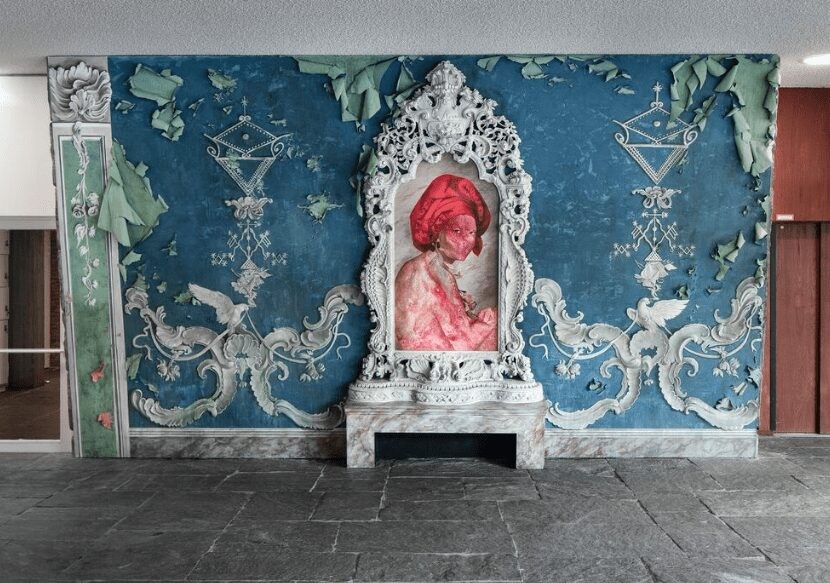The Powerful Women of Firelei Báez
15 May 2018
Magazine C& Magazine
5 min read
Firelei Báez was born in the Dominican Republic in 1981. When she was nine years old, her family moved to Miami, where she stayed until moving to New York to study at the prestigious Cooper Union School. Ever since, and to this day, she has resided in New York (although increasingly, she divides her time …
Firelei Báez was born in the Dominican Republic in 1981. When she was nine years old, her family moved to Miami, where she stayed until moving to New York to study at the prestigious Cooper Union School.
Ever since, and to this day, she has resided in New York (although increasingly, she divides her time between New York and Miami) and it is here in this city, where she presents the exhibition Joy Out of Fire at the Schomburg Center for Research in Black Culture. The title of the exhibition immediately alludes to the achievements by members of the African-American communities despite the social, political and economic injustices that continue to this day. These injustices are represented by fire as adversity but also as an irrepressible energy that provides shelter and protection.
The exhibition is part of an initiative by the Studio Museum in Harlem. This mythical institution that functions as an open house for the inhabitants and visitors in the New York neighborhood, a space of identity and identification, representation and expression, is much more than just a museum.
Currently, the museum is undergoing remodeling and construction work in order to accommodate growing demands. During this period, the managing staff have developed a program called inHarlem, where projects and exhibitions organized by the museum are hosted by neighboring institutions in the area, traditionally home to Afro-American communities.
Firelei Báez, To write fire until it is every breath (detail), 2018. Photo: Courtesy the artist and Kavi Gupta Gallery, Chicago.
The location for the exhibition Joy Out of Fire and the collaboration between the museum and the Schomburg Center has been fundamental for the creative process of Báez, who has dedicated her work to women of African-American descent and the stories found in the archives of the Schomburg Center with the assistance from archivists and researchers at the institution.
Traditionally, Báez oeuvre is centered on the recreation of female historical personalities – real or fictitious, and after arduous archive excavations. In the representation or presentation of these women, particular importance is given to the symbolism, mythologies and elements from Afro-American or Afro-Latin culture. Through this type of representation, Báez creates spaces of identification for the observer and revives or reintroduces into the historical memory the untold stories or the intentionally lost, stories of slavery, abuse and resistance of afro-descendent women.
Firelei Báez, Joy Out of Fire (detail), 2018. Photo: John Lusis. Courtesy the artist and Kavi Gupta Gallery, Chicago.
Upon entering the hexagonally shaped gallery, we find ourselves before large pieces of art displayed as murals. The first piece is a collage on nylon, in which Báez, applying her usual method, combines extracts and archive clippings interposed on a sea of color. The cutouts form a chromatic whirlpool on a white background, in which the characters from the archive are integrated with each other. The logic behind this unification of characters guides all the murals in the exhibition, where noteworthy women of African-American descent are intertwined, thus creating real and imagined relationships between them.
The groups of characters are organized according to their areas of activity. These correspond to certain categories and chromatographies belonging to the Orisha spirits in the Yoruba religion. Associated with the color red and the human body are women who fought politically in order to improve the conditions in their community. The color blue is related to activities of the “mind”, and here we find writers, scientists and, archivists whose achievements transformed the past and the present. Finally, reunited by the color yellow and the strength of their soul, are the artists, writers, and creators of worlds and fiction.
Firelei Báez, Elegant Gathering In A Secluded Garden (or The Many Bridges We Crossed) (detail), 2018. Photo: John Lusis. Courtesy the artist and Kavi Gupta Gallery, Chicago.
In the murals we find dozens of women, who Báez helped rescue from the darkness of the archives. Her images, words and drawings are intermingled in the murals. Some of the women appear in the archives repeatedly. For example, the famous activist, academic and author Angela Davis, born in 1944, is represented in the red mural at various times in her life, from her childhood to the present, accompanied by snippets of prayers taken from her texts. In the yellow mural, a portrait of Davis stands out based on the famous image by the artist Howardena Pindell, a vanguard reference for future generations. The last mural of the exhibition is dedicated to the abstract figure of Josephine Baker (1906-1975), the Creole princess of the “jazz age”.
At the center of the hexagonal ring, visitors discover a selection of documents retrieved from the archives, such as photographs, letters, newspaper clippings and personal diaries. These elements rest on a wallpaper created by Báez, which replicates the landscape of Harlem. In this way, Báez completes the circle of Joy Out of Fire, offering to the audience multiple sources of historical information, fictional relationships, and emotions evoked through art.
Roxana Fabius is a curator, art historian and author. She lives and works in New York City.
Translation by Zarifa Mohamad Petersen.
Read more from
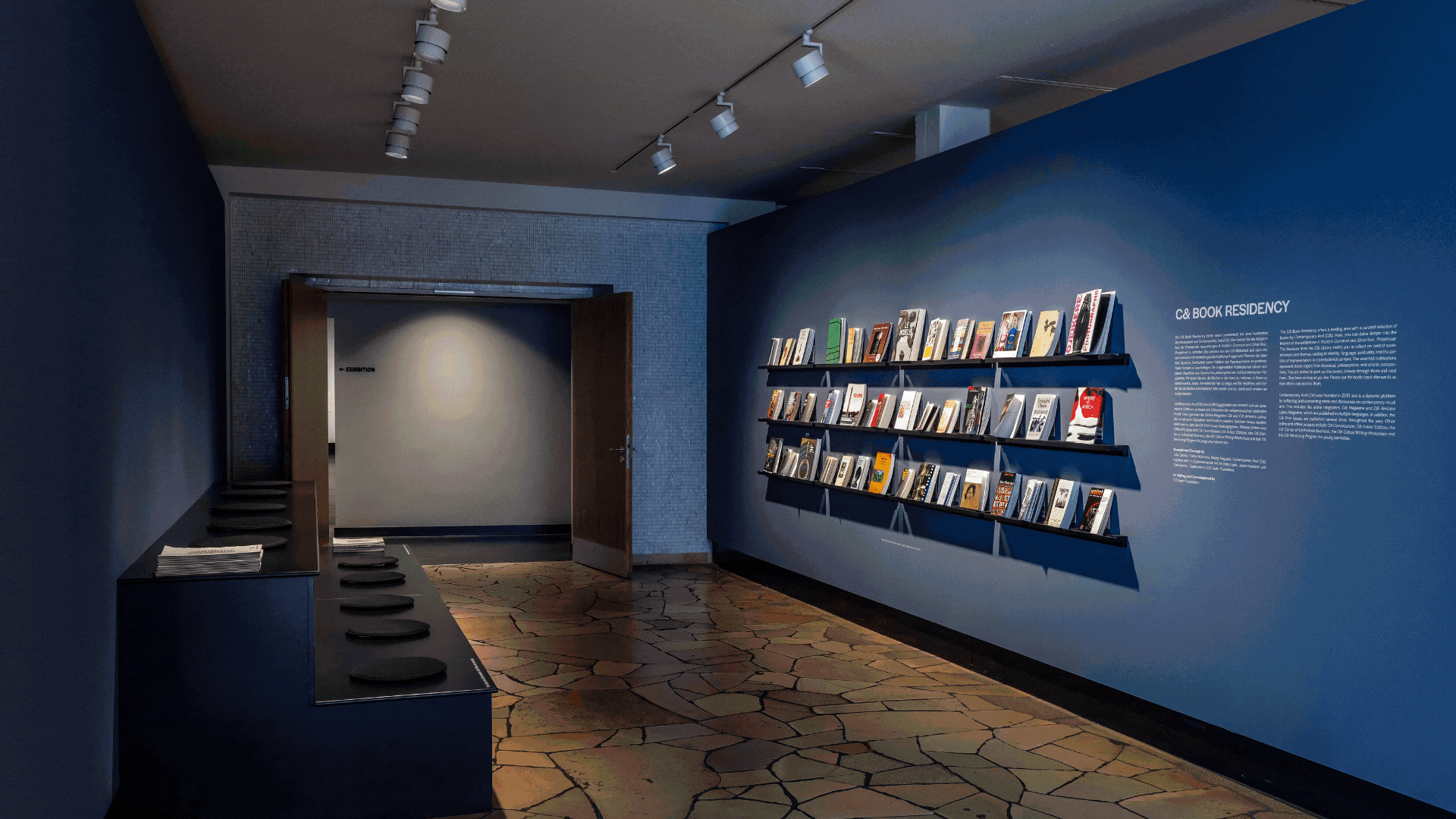
C& Highlights of 2025
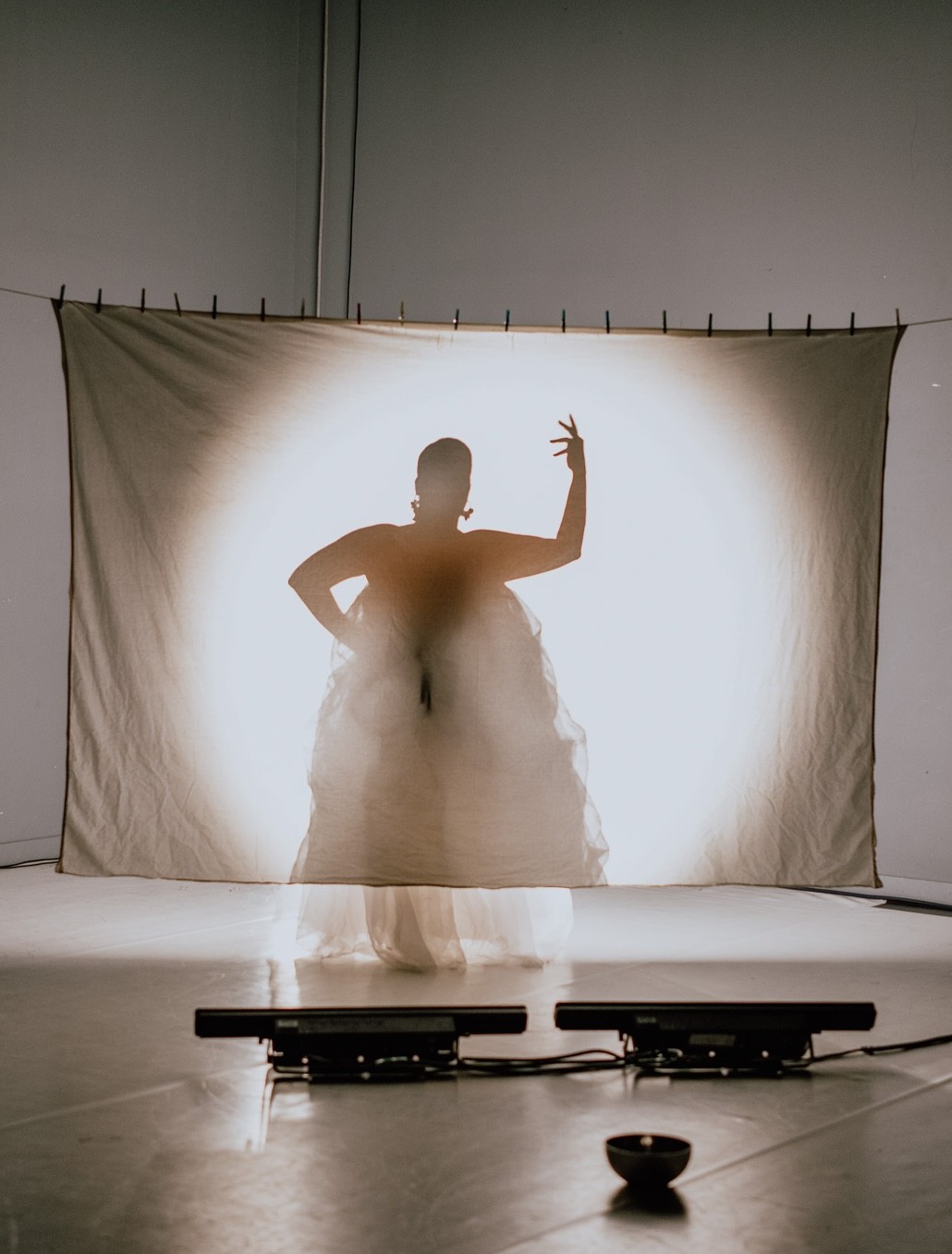
The Museum of Black Futures
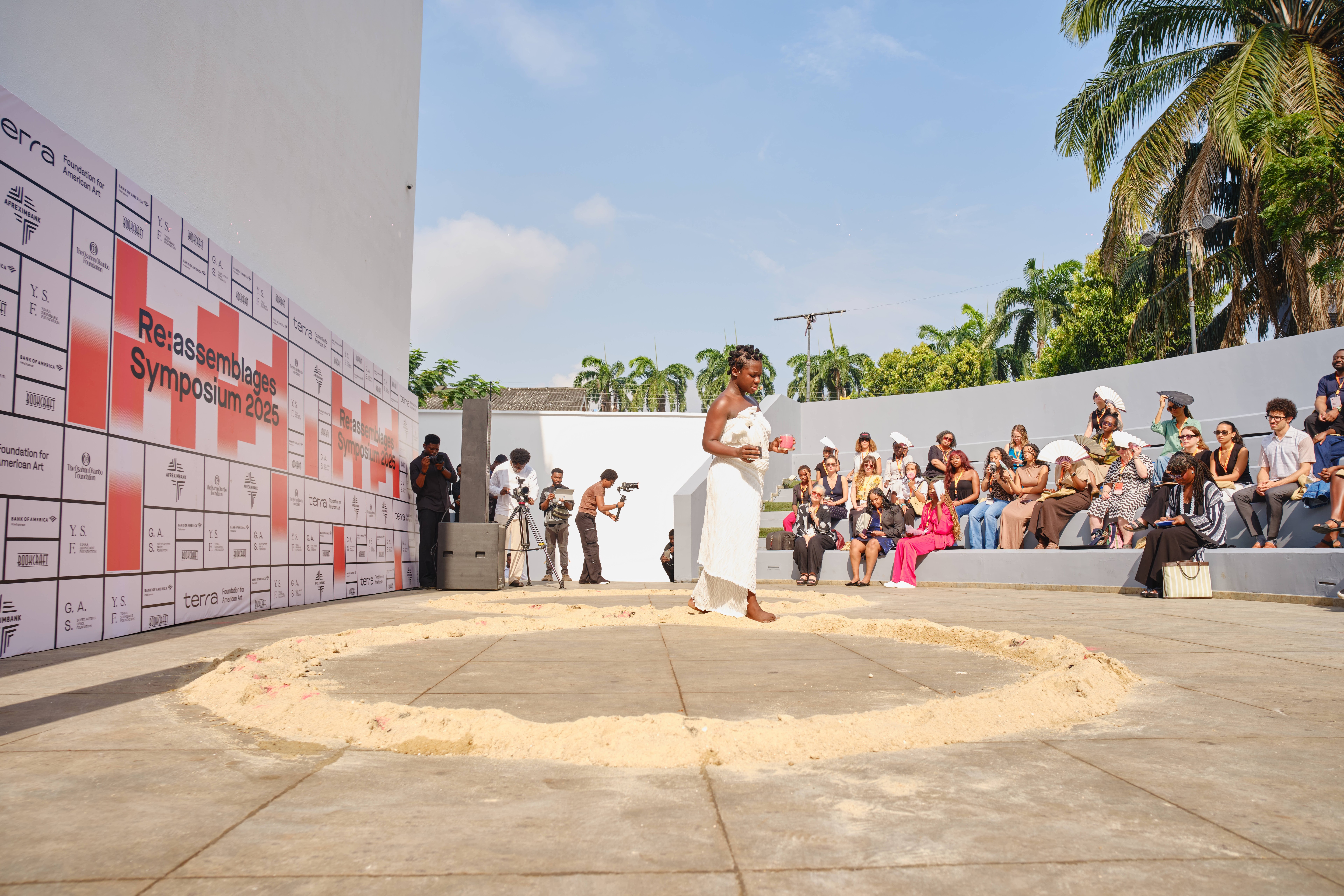
The Re:assemblages Symposium: How Might We Gather Differently?
Read more from
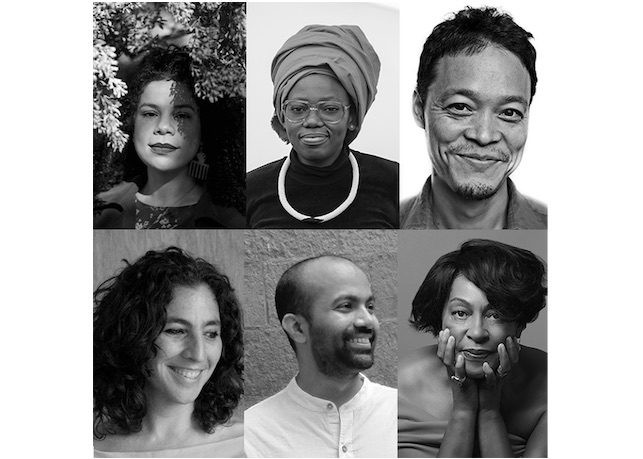
All Shortlisted Artists Awarded the 9th Artes Mundi Prize
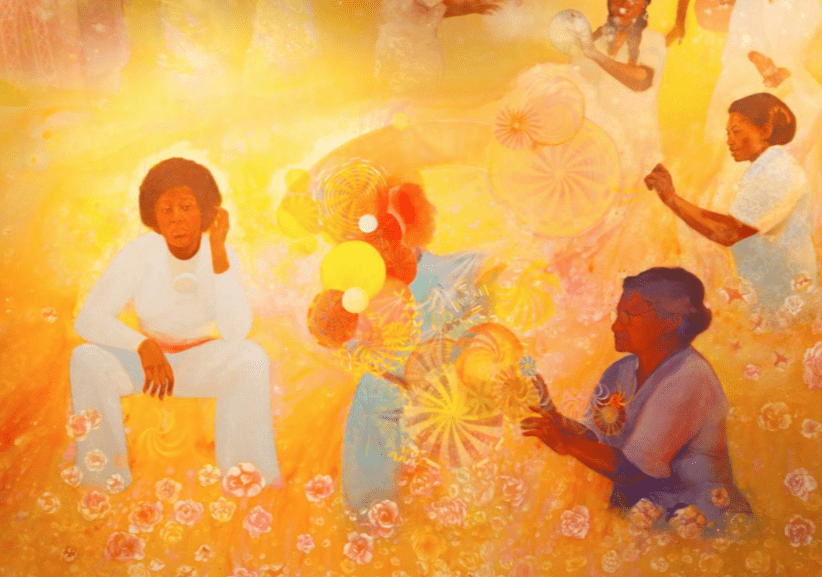
Shortlist announced for Artes Mundi 9
